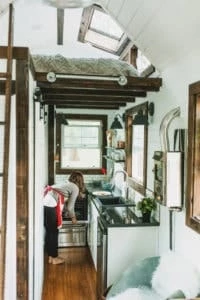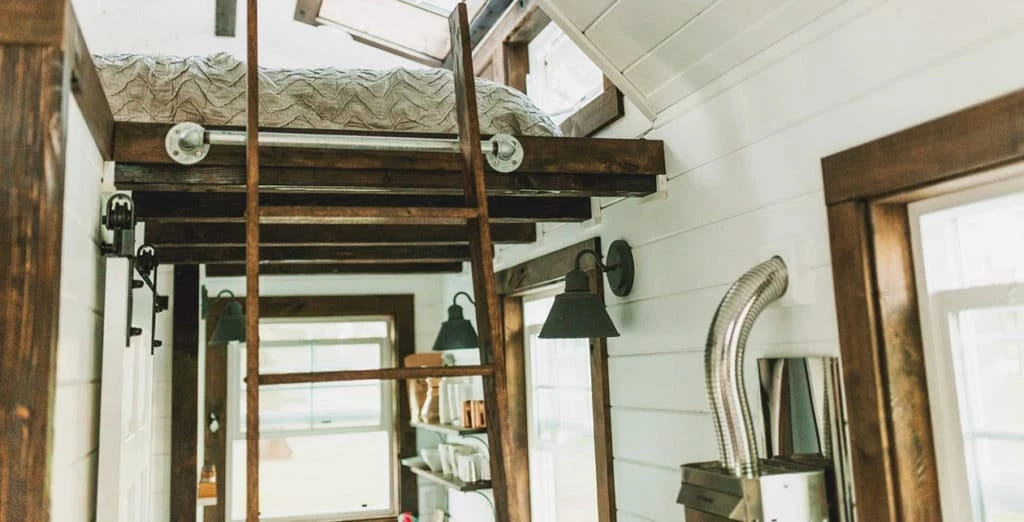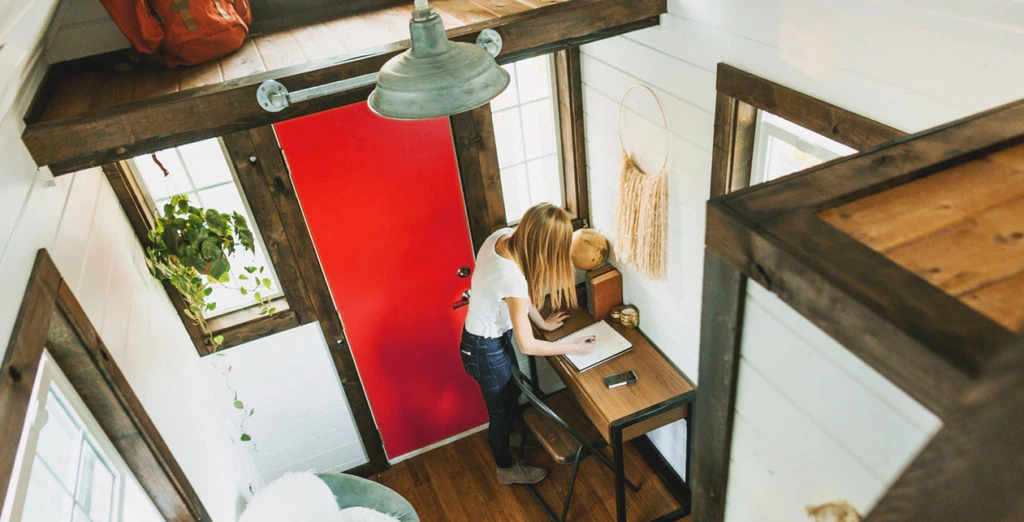Life in a tiny home: All you need to know
The demand for tiny homes is on the rise.
This new trend is due in large part to the rising costs of owning a home as well as the housing crisis. Along with these considerations, living in a tiny home comes with many other advantages.
Is living in a tiny home the right choice for you?
What’s a tiny house
The term “tiny home” can mean many different things.
For some, a tiny home is one that’s built on a traditional foundation and measures less than 500 and often less than 400 square feet. For others, a tiny home is built on wheels and can be easily moved from one place to another.
Tiny homes are usually made from same materials as traditional home and can be much heavier and less aerodynamic than RVs. They are designed to be practical.
As well, tiny homes are made to be lived in year round while trailers and campers tend to be seasonal and offer temporary accommodation.
Some tiny homes can be built right in your backyard, providing you with an opportunity for an intergenerational living space. For example, these detached spaces can provide an alternative accommodation to a seniors’ residence for elderly family members, as well as a home for parents or children.
When we talk about tiny homes, the sky really is the limit!

Financing costs
Living in a tiny home can add up to big savings. The average prefabricated tiny home costs between $60,000 and $100,000, and building one yourself costs about $30,000. That’s much less than buying a traditional house, no matter what neighbourhood you live in. And that’s not even calculating energy, maintenance and other savings.
Be careful when putting your budget together, however. Other costs related to owning a tiny home can add up. Do you need to purchase land first? Will you need to custom-build furniture for your tiny home or purchase appliances that aren’t a traditional size?
Building a tiny home yourself can add up to savings of between 20% and 50%, depending on how much you can get done on your own. Note that any do-it-yourself project must meet municipal requirements as well as building and construction codes.
Remember that tiny homes on wheels are considered trailers, which typically can’t be purchased with a mortgage. Even tiny homes without wheels may require a personal loan, since few financial institutions are willing to offer small mortgages, knowing the mortgages don’t appreciate in value over time.

Land
One key inconvenience of owning a tiny home is municipal regulations. Many municipalities have strict norms when it comes to the size of new permanent construction.
Because of their small size, tiny homes sometimes make it difficult to meet current building codes for electricity and plumbing that were established for homes with larger surface areas.
Plus, many neighbourhoods and cities do not allow citizens to live in non-permanent structures for the long term or may limit the presence of these structures altogether – even if your tiny home is built on your own land.
To help guide you, the Mouvement québécois des minimaisons has put together an interactive map of minimum construction norms for municipalities that allow tiny homes: minimaison.org/ou-sinstaller/
Good for the environment
Their smaller size alone makes tiny homes eco-friendly – from needing less building material and using primarily wood to featuring large windows to take advantage of energy-efficient solar heating.
If your tiny home is mobile, as is often the case, you can move it into the shade in summer and return it to a sunnier spot in winter to make the most of the temperature to reduce your energy consumption.

Space
Living in a tiny home means whittling your possessions down to 10% of what you’d have in a regular-sized house. Although some may find this a huge sacrifice, many who follow the minimalist movement find the experience liberating.
Owning a traditional house means spending much of your time cleaning and doing repairs. With a tiny home, you can spend that time enjoying life, investing in your hobbies, travelling and more.
It can, however, be a challenge for many people to live together in a small space.
Insuring tiny homes
Insuring your tiny home is subject to a multitude of factors. Depending on what province you live in, tiny homes that include the following features should not be difficult to insure with conventional home insurance:
- Have a permanent foundation
- Built using conventional techniques and materials
- Include central heating, plumbing, electricity and a septic tank
- Constructed with all necessary permits
Any tiny home that doesn’t meet the above criteria may have to be insured differently. For example, a tiny home on wheels may require a policy that covers RVs, and one built without modern conveniences may require a custom-designed policy.
No matter what kind of tiny home you’re looking for, be sure to speak to one of our insurance specialists to see what’s available to you as the owner of a tiny home.

